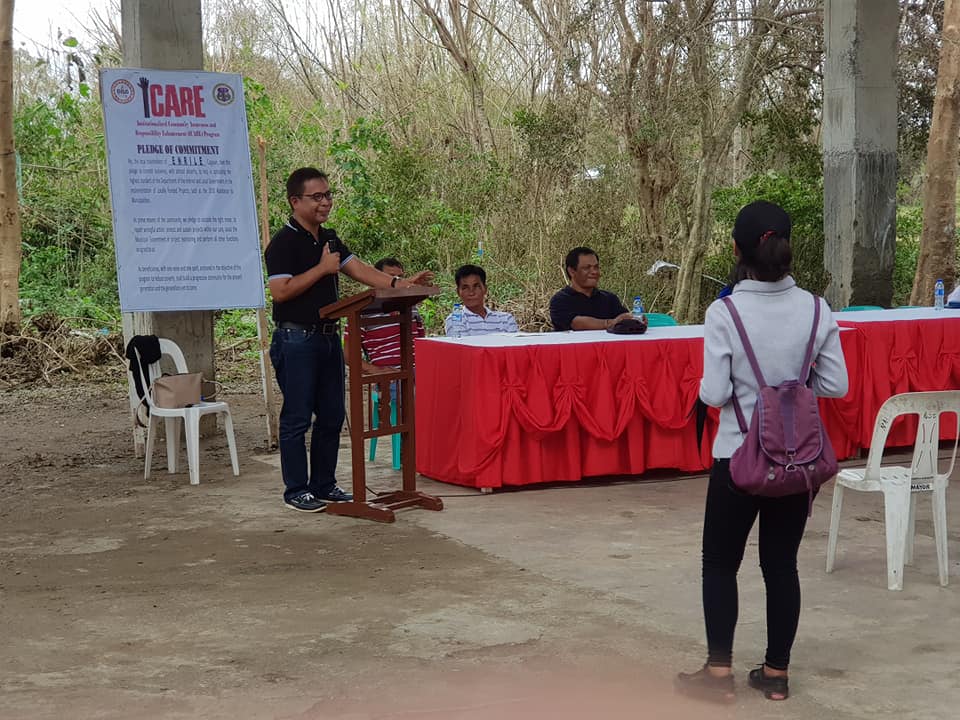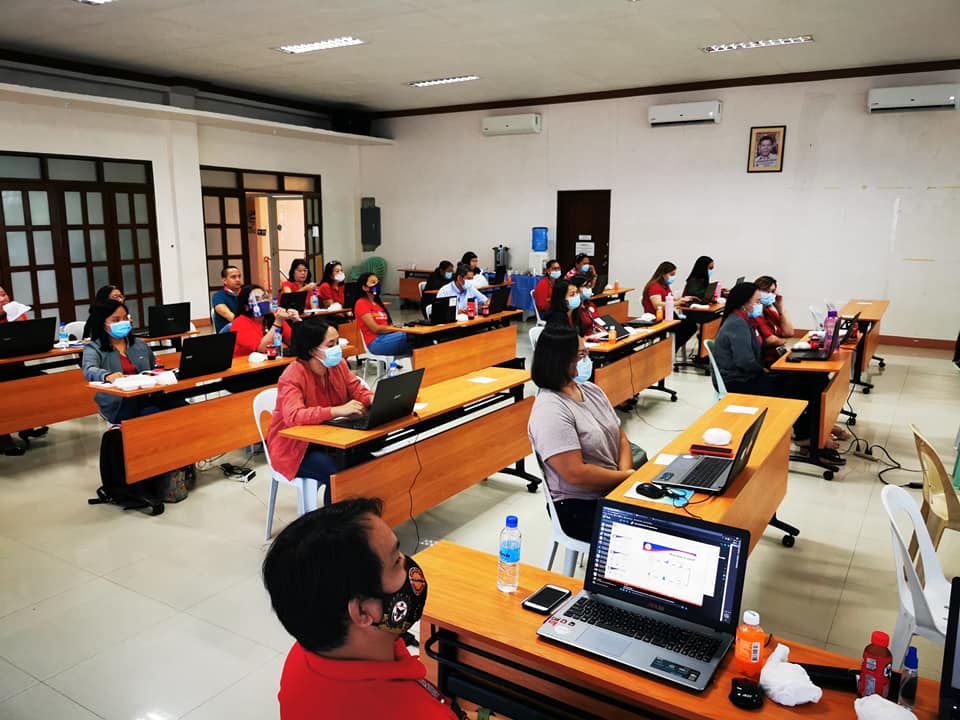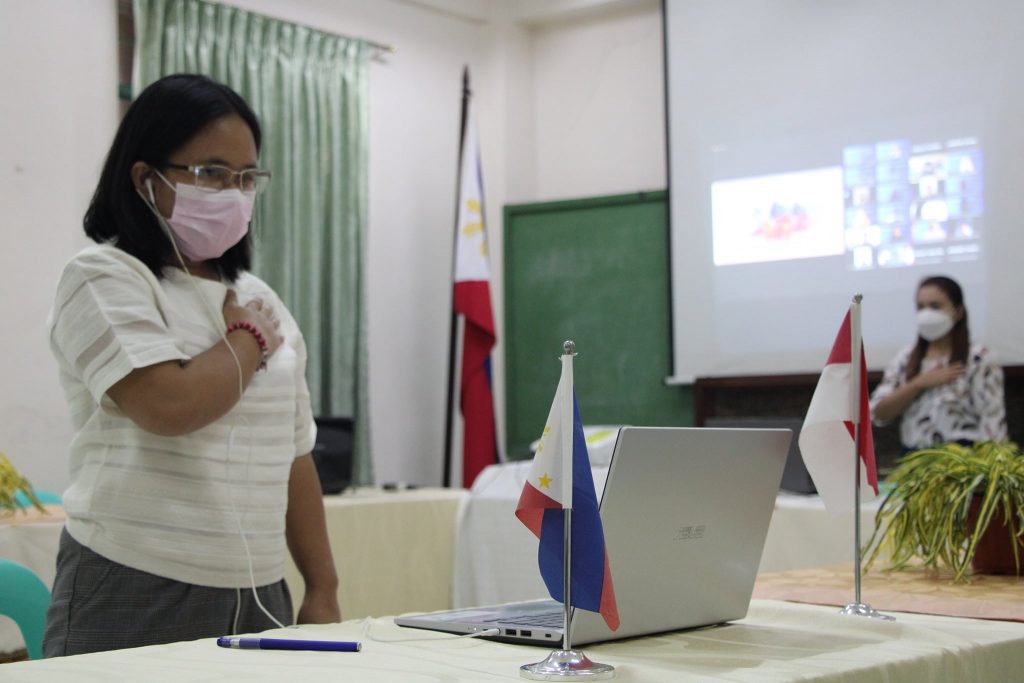Organization
Department of the Interior and Local Government
Best Practice Focus Area/s
Leadership Strategy Citizens / Customers
Year Implemented
14 August 2021
This is a GBPR Entry
Summary
In view of the critical importance of information and advocacy amidst the COVID-19 health crisis, the Department of the Interior and Local Government (DILG) and the Department of Health (DOH) have merged the DILG’s “Disiplina Muna” national advocacy campaign and the DOH’s “BIDA Solusyon sa COVID-19” into a common advocacy campaign dubbed as “BIDA ang May Disiplina: Solusyon sa COVID-19”.
The joint campaign emphasizes the significance of individual self-discipline and behavioral change as one solution to beat COVID-19 to secure the safety of families and the nation; thus, the slogan, “Ligtas ang Pamilya, Ligtas ang Bayan” as enunciated in the DILG Memorandum Circular (MC) No. 2020-116 dated 1 September 2020. The BIDA ang May Disiplina campaign promotes the four B.I.D.A. behaviors as each citizen’s active role in the fight against COVID-19:
B – Bawal walang mask
I – I-sanitize ang mga kamay, iwas-hawak sa mga bagay
D- Dumistansya ng isang metro; at
A- Alamin ang totoong impormasyon.
This is now upgraded to BIDA+. The plus is the addition of promoting mass vaccination against COVID-19.
Background and Problem
The Disiplina Muna national advocacy campaign is an initiative of the DILG as the Chair of the Cabinet’s Participatory Governance Cluster (PGC), which seeks to rebuild the culture of discipline among Filipinos as a means to foster people’s participation, which is one tenet of good governance.
At the start of the COVID-19 pandemic, the Department of Health (DOH), on behalf of the Interagency Task Force for Emerging Infectious Disease (IATF-EID) and in coordination with the Presidential Communications Operations Office (PCOO), launched the “BIDA Solusyon sa COVID-19” campaign which aims to encourage the Filipino people to take an active role in the fight against the common enemy: COVID-19.
The DILG and DOH have agreed to merge the Disiplina Muna advocacy campaign and the BIDA Solusyon sa COVID-19 into a common advocacy campaign dubbed “BIDA ang May Disiplina: Solusyon sa COVID-19” as stated in DILG Memorandum Circular (MC) No. 2020-116 dated 1 September 2020. The “BIDA ang may Disiplina” campaign is a joint effort of the DILG and DOH brought forth to encourage people to participate in the battle against COVID-19 by living a life of discipline and earnestly practicing the minimum public health standards (MPHS) set by health authorities.
As the country continues to enforce community quarantine restrictions while balancing public health protection with the need to reopen the economy, there is a need to institute measures to promote discipline and individual responsibility among people through local legislation, which is why the campaign encourages Local Government Units (LGUs) to launch the program in their respective localities. Through the campaign, the importance of individual self-discipline and behavior change, practiced by the citizens down at the grassroots level, is also emphasized as a means to beat COVID-19 to ensure the safety of families and of the nation.
This year, the country started its National Vaccination Program shortly after the arrival of the vaccines. However, vaccine hesitancy remains an enormous challenge for the country as it continues to face the COVID-19 pandemic. With this, the BIDA ang May Disiplina campaign has also been upgraded to promote the COVID-19 vaccination program of the government as an integral part of disease prevention while still practicing the minimum public health standards (MPHS) as non-pharmacological interventions.

Solution and Impact
To prevent the further spread of COVID-19, provincial, city, municipality, and barangay sanggunians were enjoined to issue ordinances that prescribe discipline, which includes following health safety protocols like wearing of face mask in public, sanitizing hands, observing at least one-meter physical distancing, observing cough etiquette, and staying at home of children and senior citizens.
LGUs were also encouraged to organize Barangay Disiplina Brigades in each barangay in the country to drive the campaign’s core message: individual responsibility and discipline will stop the spread of COVID-19. To be composed of volunteers, barangay tanods, and other concerned residents, the Barangay Disiplina Brigades shall promote the spirit of volunteerism and ensure that the community implements the minimum public health standards (MPHS). The DILG’s nine attached agencies were also directed to incorporate the “BIDA ang May Disiplina: Solusyon sa COVID-19” campaign in their ongoing or upcoming programs, projects, and activities (PPAs) related to beating COVID-19. They also encouraged LGUs and DILG attached agencies to use their existing social media platforms to promote discipline as the new normal to beat COVID-19 by posting or sharing infographics, videos, or press releases of the Campaign.
LGUs and attached agencies have reported significant and sustained gains as they continue to champion the BIDA ang May Disiplina campaign through implementing the aforementioned initiatives.
Milestones
The national launch of the “BIDA ang May Disiplina: Solusyon sa COVID-19” campaign was conducted with the DILG National Capital Region and the City Government of Marikina on August 14, 2020 in Marikina City, led by the DILG Undersecretary Jonathan Malaya together with the DOH Secretary Dr. Francisco T. Duque III and Marikina Mayor Marcelino Teodoro.
On 2 September 2020, Manila Mayor Isko Moreno, Baguio Mayor, Contact Tracing Czar Benjamin Magalong, and Ormoc Mayor Richard Gomez guested in the virtual launch and shared how they promote discipline in their localities amid the pandemic.
The DILG also initiated partnerships with the private sector in further spreading the B.I.D.A. message. On September 16, 2020, an activity dubbed “BIDA ang May Disiplina: Harnessing Private Sector Support to Defeat COVID-19” was conducted. The event highlighted the signing of a Memorandum of Agreement with the Ad Standards Council and Kapisanan ng mga Brodkaster ng Pilipinas for radio ads to support the campaign.
The event introduced the celebrity ambassadors of the campaign, namely Diether Ocampo, Jiggy Manicad, James Deakin, Paolo Bediones, and its first female champion, Regine Tolentino. The DILG and the National Youth Commission partnered with the Limitless Lab in conducting an online training dubbed “BIDA ang Kabataang May Alam at Disiplina: A Virtual Basic Orientation on Video Production” on 18 September 2020.
The half-day online webinar, participated by the Sangguniang Kabataan representatives from different regions in the country, were taught how to produce videos for social media in line with the component of the BIDA ang May Disiplina campaign to prevent fake news amid the pandemic. The DILG partnered with the National Telecommunications Commission to promote BIDA practices through public text blasts.
The DILG further rallied the support of local chief executives (LCEs) to the BIDA ang May Disiplina campaign through the designation of LCE Ambassadors of each region in the country who will advocate the same among their fellow LCEs in their regions and their constituents. Among the identified champions of the campaign named in DILG Memorandum Circular No. 2021-019 issued on 16 December 2020 are Quirino Governor Dakila Carlo Cua of Region 2 and Marinduque Governor Presbitero J. Velasco Jr. of Region 4-B.
The BIDA ang May Disiplina campaign continues to reach a wider audience through the development of TV commercials (TVCs) which feature DILG Secretary Eduardo M. Año and Disiplina Muna Ambassadors, namely public personalities Diether Ocampo, Paolo Bediones, James Deakin, Mayor Isko Moreno, Mayor Richard Gomez, and Arci Muñoz.
The TVCs are currently being aired on the Solar Learning channel and shown on LED billboards of local government units (LGUs) in Metro Manila and other parts of the country, as well as LED billboards of the Metropolitan Manila Development Authority and Armed Forces of the Philippines. The TVCs encourage individuals to get vaccinated as one with the national government to achieve population protection in the fight against COVID-19. The TVCs are also posted online on DILG Philippines and Disiplina Muna Facebook pages and the Kuwentuhang Lokal program in Teleradyo.







